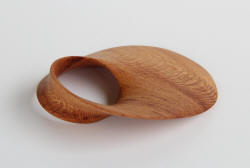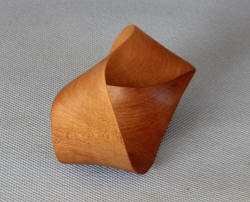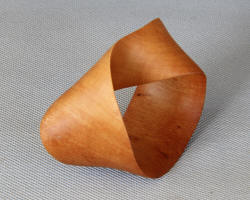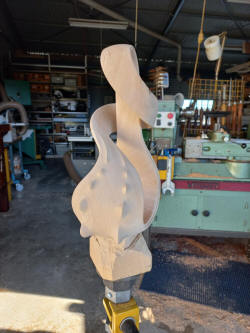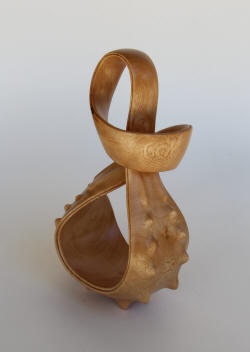|
|
My carving journey . . .
While I have collected a few carving and shaping tools over the years to 'shape' some components of my turned and flat work, it is only now that I have retired that I finally have time to tackle some carved pieces just for the fun of it. Here is the journey so far.
| |
|
| |
|
|
Mobius forms | ||
I found it was one thing to have the time and tools to start carving, but another thing entirely to decide on what to carve! At this stage I have no desire to replicate life in sculptures, or try chip carving on flat boards etc, but I think I would rather just create attractive shapes with no real identity that might make people think about what they are looking at. It was only seeing an article on Hape Kiddle and his work with Mobius forms that really triggered my senses and gave me some direction to make a start. https://www.hapekiddle.com/ The notion of a shape that has only one edge and one surface absolutely does my head in, in the nicest possible way! |
|
|
|
|
|
|
|
|
|
|
|
Curiosity got the better of me for Mobius V and I went for the 'mathematical' version of a mobius. Using physical strips as models doesn't allow you to see this version, which is basically a flat strip that twists 180 degrees as it travels around a full circle. Just leaving it at that would have looked pretty boring so I carved out the middle of the surface to look like it had been pulled apart. Turns out that doing this also accentuates the 'one edge' characteristic of the form. Carving it from White Beech was a delicate task and as the timber is not all that strong in cross-grain, I went with suspending it in a Rose Mahogany frame so it is less likely to be rough-handled. |
|
|
|
|
Back to Top
Mobius VI |
|
|
Back to Top
What if wood wasn't . . . ? |
The work of Phil Young caught my interest some years ago but I didn't want to just copy what he had done so I set about coming up with my own ideas - not as easy as it sounds - Phil had just about used up all the options. After many hours of pondering, I came up with the series below that I hoped would get people wondering how they came to be. |
|
|




